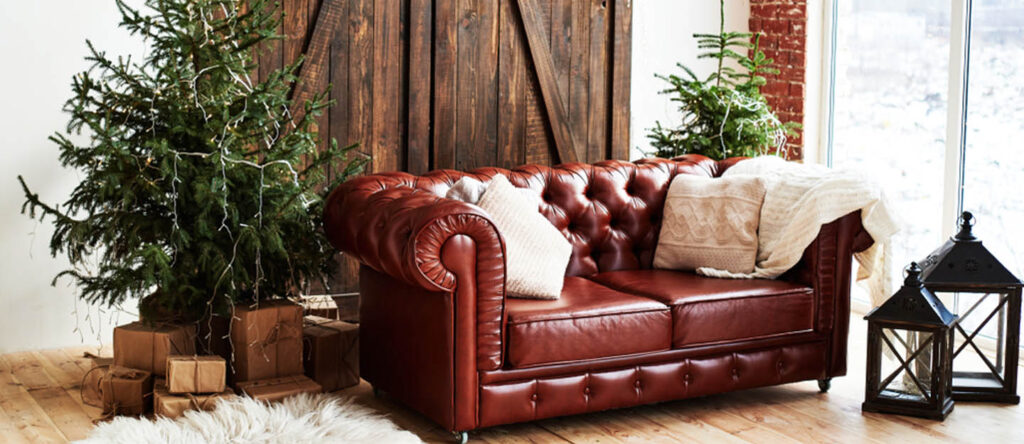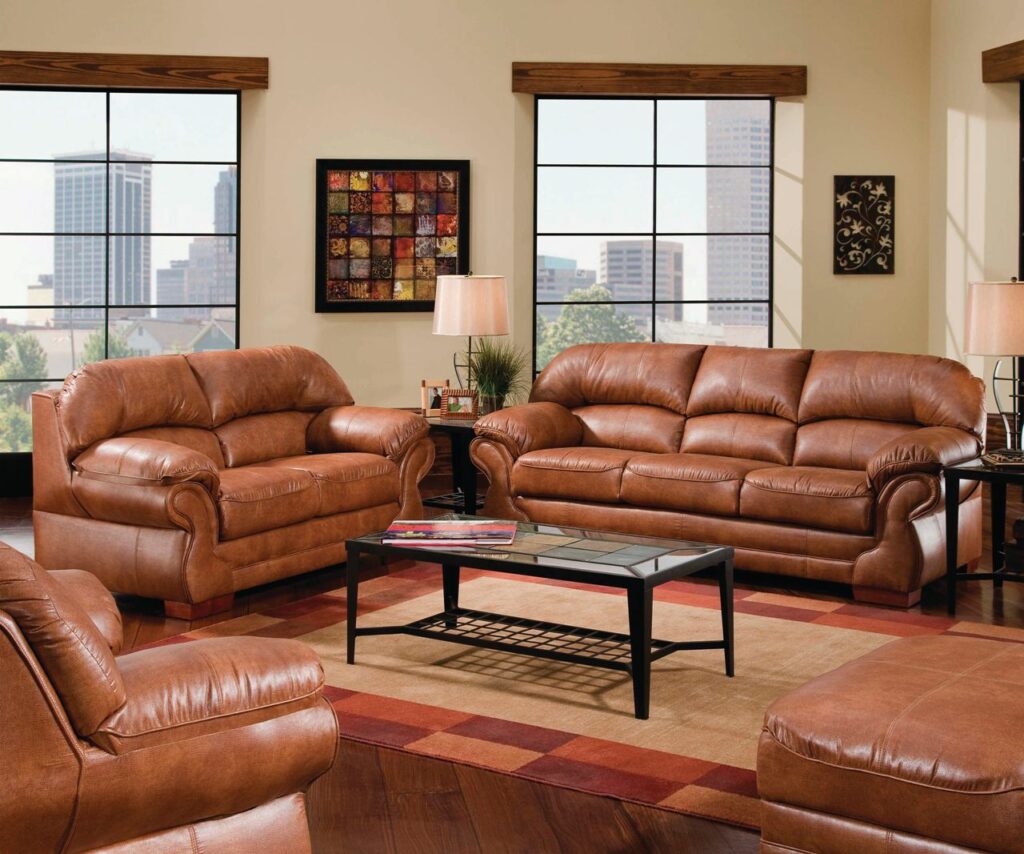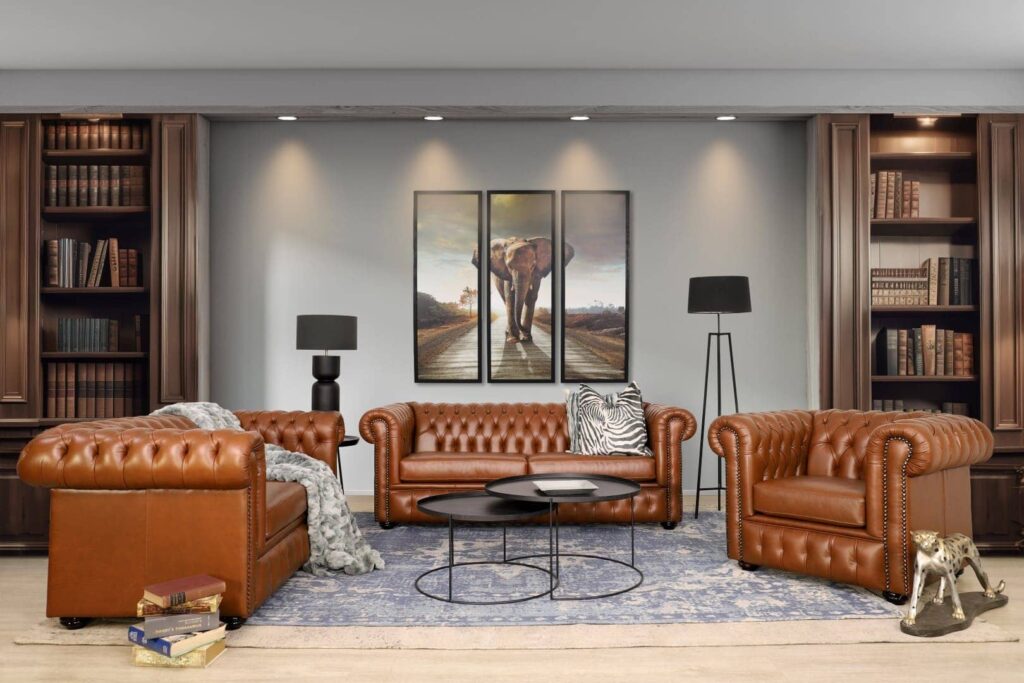Leather sofas are a timeless furniture choice that can add sophistication and elegance to any living space. However, with so many options available, it can be overwhelming to choose the right style that suits your taste and requirements. Additionally, leather sofas require proper care and maintenance to ensure their longevity. In this article, we will explore the basics of leather sofas, discuss factors to consider when making a purchase, provide a style guide, and offer essential care tips to keep your leather sofa looking its best.
Understanding the Basics of Leather Sofas
Before diving into the world of leather sofas Sydney, it’s important to familiarize yourself with a few key concepts. One of the first considerations is the type of leather used in the construction of the sofa.
When selecting a leather sofa, it’s crucial to understand the different types of leather used in their construction. Full-grain leather, for instance, is considered the highest quality option due to its natural markings and durability. Top-grain leather is another popular choice, known for its smooth texture and resistance to stains. Split-grain leather, made from the lower layers of the hide, is more affordable but tends to be less durable than full-grain or top-grain options. Click here to get how design your dream living room layout with modular sofas
Types of Leather Used in Sofas
There are various types of leather available, each with its own unique characteristics. Full-grain leather, for instance, is the highest quality and most durable option. Corrected-grain leather is another popular choice, as it undergoes a treatment process to correct any imperfections. Bonded leather, on the other hand, is made from a mixture of leather scraps and synthetic materials.
Furthermore, aniline leather is a premium type of leather that retains the hide’s natural surface, showcasing unique markings and variations in color. Semi-aniline leather is another option, featuring a light protective coating while still maintaining the leather’s natural look and feel.
The Durability and Longevity of Leather Sofas
Leather sofas are known for their durability and longevity. When properly cared for, a high-quality leather sofa can last for decades. The natural strength and resilience of leather make it resistant to wear and tear, ensuring that it maintains its aesthetic appeal over time.
Additionally, leather sofas develop a beautiful patina over time, adding to their charm and character. Regular maintenance, such as conditioning the leather to prevent drying and cracking, can help prolong the lifespan of your sofa. Investing in a leather sofa is not just a purchase; it’s a long-term commitment to quality and style.
Factors to Consider When Choosing a Leather Sofa
When shopping for a leather sofa, there are several factors you should take into account to ensure you make the right choice for your home.
Investing in a leather sofa is not just about style but also about quality and comfort. Leather sofas come in various types of leather, such as full-grain, top-grain, and bonded leather. Full-grain leather is the highest quality and most durable, while bonded leather is more affordable but less resistant to wear and tear. Understanding the different types of leather can help you make an informed decision when selecting a sofa that suits your lifestyle and budget.
Assessing the Quality of Leather
The quality of leather used in the sofa is crucial in determining its durability and visual appeal. Look for soft and supple leather that does not easily scratch or fade. Pay attention to the stitching and overall craftsmanship of the sofa, as these details can indicate the quality of the piece.
Furthermore, consider the leather finish of the sofa. Aniline leather retains the natural surface with minimal coating, showcasing the leather’s unique characteristics. On the other hand, semi-aniline leather has a light protective coating, making it more resistant to stains and fading. Understanding the different leather finishes can help you choose a sofa that aligns with your maintenance preferences and aesthetic taste.
Choosing the Right Size and Shape
Consider the size and shape of the sofa in relation to your living space. Measure the area where you plan to place the sofa to ensure it fits comfortably. Additionally, think about the number of occupants and their preferences. A sectional sofa may be ideal for larger families, while a compact loveseat suits smaller spaces.
Moreover, think about the sofa’s depth and seat height. A deeper sofa provides a more relaxed seating experience, perfect for lounging and napping. On the other hand, a sofa with a higher seat height is easier to get in and out of, ideal for individuals with mobility issues. Finding the right balance between comfort and functionality is essential when selecting a leather sofa for your home.
Matching Your Sofa to Your Interior Design
Your leather sofa should seamlessly blend with your existing interior design. Consider the color palette and style of your room when choosing the color and design of your sofa. Classic leather sofas in neutral tones such as black, brown, or tan are versatile options that can complement various interior styles.
Additionally, think about the overall aesthetic of your space. A modern leather sofa with clean lines and metal accents can enhance a contemporary setting, while a tufted leather sofa with rolled arms complements a traditional decor style. Mixing and matching different textures and materials can create a visually dynamic and inviting living space that reflects your personality and design preferences.

Style Guide for Leather Sofas
One of the great advantages of leather sofas is their ability to offer both classic and modern styles. Let’s delve into the characteristics of each.
When it comes to choosing a leather sofa, there are various factors to consider beyond just style. It’s essential to think about the type of leather used, such as full-grain, top-grain, or bonded leather, as each has its unique qualities in terms of durability and appearance. Additionally, the sofa’s frame material, cushion filling, and stitching details all play a crucial role in the overall comfort and longevity of the piece.
Classic Styles and Their Characteristics
Classic leather sofas exude timeless elegance and sophistication. They often feature tufted backs, rolled arms, and intricate detailing. Think of Chesterfield sofas or traditional English-style designs. These styles lend a sense of grandeur to any space and pair beautifully with antique or vintage decor.
For those looking to invest in a classic leather sofa, it’s important to pay attention to the quality of craftsmanship. Handcrafted details, such as hand-tied springs and hand-stitched seams, not only add to the sofa’s charm but also indicate superior construction that will stand the test of time.
Modern Styles and Their Unique Features
If you prefer a more contemporary aesthetic, modern leather sofas offer sleek lines and minimalist designs. They may feature clean geometric shapes, chrome accents, and adjustable headrests. Modern leather sofas are perfect for creating a clean and streamlined look in your living area.
When selecting a modern leather sofa, consider the functionality it offers. Some models come with built-in USB ports for charging devices, hidden storage compartments, or even reclining capabilities for added comfort. These innovative features cater to the needs of modern lifestyles while maintaining a chic and stylish appearance.
Essential Care Tips for Leather Sofas
Proper care and maintenance are essential to keep your leather sofa looking its best for years to come.
Investing in a high-quality leather sofa is a decision that can elevate the style and comfort of your living space. To ensure your leather sofa remains a timeless centerpiece, it’s crucial to follow a consistent care routine.
Routine Cleaning and Maintenance
Regularly dust off your leather sofa using a soft cloth or vacuum with a brush attachment to remove any surface dirt or debris. This simple step helps prevent particles from settling into the creases and pores of the leather, maintaining its smooth appearance. For a deeper clean, consider using a leather conditioner to nourish the material and restore its natural luster.
Furthermore, leather sofas are susceptible to drying out over time, especially in arid climates. To combat this, experts recommend conditioning your sofa every 6-12 months to keep the leather supple and prevent cracking.

Dealing with Stains and Spills
Inevitably, accidents happen. If your leather sofa encounters a spill or stain, act quickly. Blot the affected area with a clean, absorbent cloth and avoid rubbing, as it can spread the stain. Use a leather-specific cleaner or a mild soap solution to gently clean the spot, following the manufacturer’s instructions.
For oil-based stains like grease or ink, sprinkle a small amount of baking soda or cornstarch on the affected area to absorb the oil before gently wiping it away. It’s important to test any cleaning solution on a hidden area of the sofa first to ensure it doesn’t cause discoloration.
Preventing and Repairing Damage
Minimize direct exposure to sunlight, as it can cause the leather to fade over time. Consider rearranging your furniture or using curtains to shield your leather sofa from prolonged sunlight exposure. Additionally, keep sharp objects and pets away from your leather sofa to prevent scratches. If your sofa does sustain damage such as a scratch or scuff, consider using a leather repair kit or consult a professional for assistance.
By following these care tips and incorporating them into your regular cleaning routine, you can extend the lifespan of your leather sofa and enjoy its luxurious look and feel for years to come.
Making Your Leather Sofa Last: Advanced Care Techniques
In addition to routine care, there are advanced techniques you can employ to further prolong the life of your leather sofa.
When it comes to maintaining the longevity of your leather sofa, one crucial aspect is understanding the type of leather it is made from. Different types of leather, such as full-grain, top-grain, and bonded leather, require specific care methods to ensure their durability and appearance over time. Researching and identifying the type of leather used in your sofa will help you tailor your maintenance routine accordingly.
Conditioning Your Sofa for Longevity
Leather is a natural material that can dry out over time. To prevent this, regularly apply a leather conditioner to keep the material moisturized and supple. This conditioning helps prevent cracking and maintains the leather’s natural beauty.
Moreover, when conditioning your leather sofa, it’s essential to test the product on a small, inconspicuous area first to ensure compatibility and avoid any adverse effects on the leather. Additionally, using a clean, soft cloth to apply the conditioner in gentle, circular motions allows for even distribution and absorption into the leather, maximizing its effectiveness.
When to Seek Professional Help
If your leather sofa requires extensive repair or if you are unsure of the best course of action, it’s always wise to consult a professional. Leather restoration experts have the knowledge and specialized tools to address more complex issues and ensure your sofa remains in top condition.
Furthermore, professional leather cleaning services can offer deep cleaning treatments that go beyond regular maintenance, removing ingrained dirt, stains, and odors to revitalize your sofa’s appearance. These professionals can also provide recommendations on specialized products and techniques tailored to your specific leather type, ensuring comprehensive care and protection.
By following these tips and selecting a leather sofa that suits your style and lifestyle, you can enjoy the comfort and beauty of leather for many years to come. Remember to assess the different types of leather available, consider key factors when making a purchase, and implement regular care and maintenance practices. With proper attention, your leather sofa will be a centerpiece of elegance in your home.

